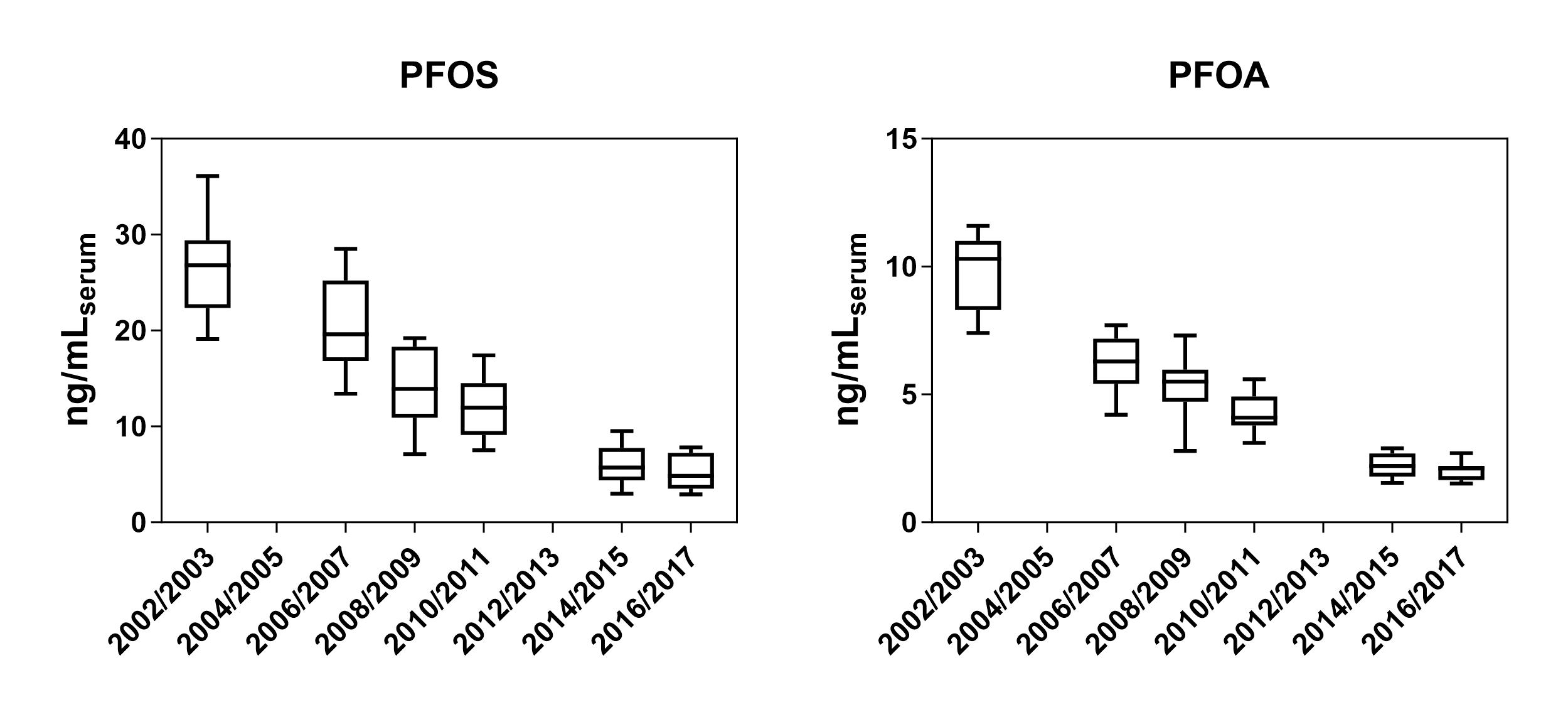Case Study - Per- and Poly-fluoroalkyl Substances (PFAS)
What are they? Fluorinated chemicals are a class of compounds that contain fluorine-carbon bonds. They are used in a wide variety of consumer and commercial products to impart stain resistance, waterproofing, lubrication, and other properties. They have also been used as surfactants in fire-fighting foams. Selected chemicals in this class are highly persistent in the environment and in humans and animals.
Australian biomonitoring data: PFAS have been measured in blood serum samples in the Australian population every two years since 2002, with results published in the scientific literature. Results for two of the most commonly studied compounds, perflurooctane sulfonate (PFOS) and pefluorooctanate (PFOA) are illustrated below. The graphs show the concentrations measured 2002–2017 in ages 16 and above. Boxes represent the interquartile range of the pools, with the median represented by a horizontal line. Whiskers extend to the 5th and 95th percentiles. The graphs show that levels of these compounds have been declining over time in Australians.

